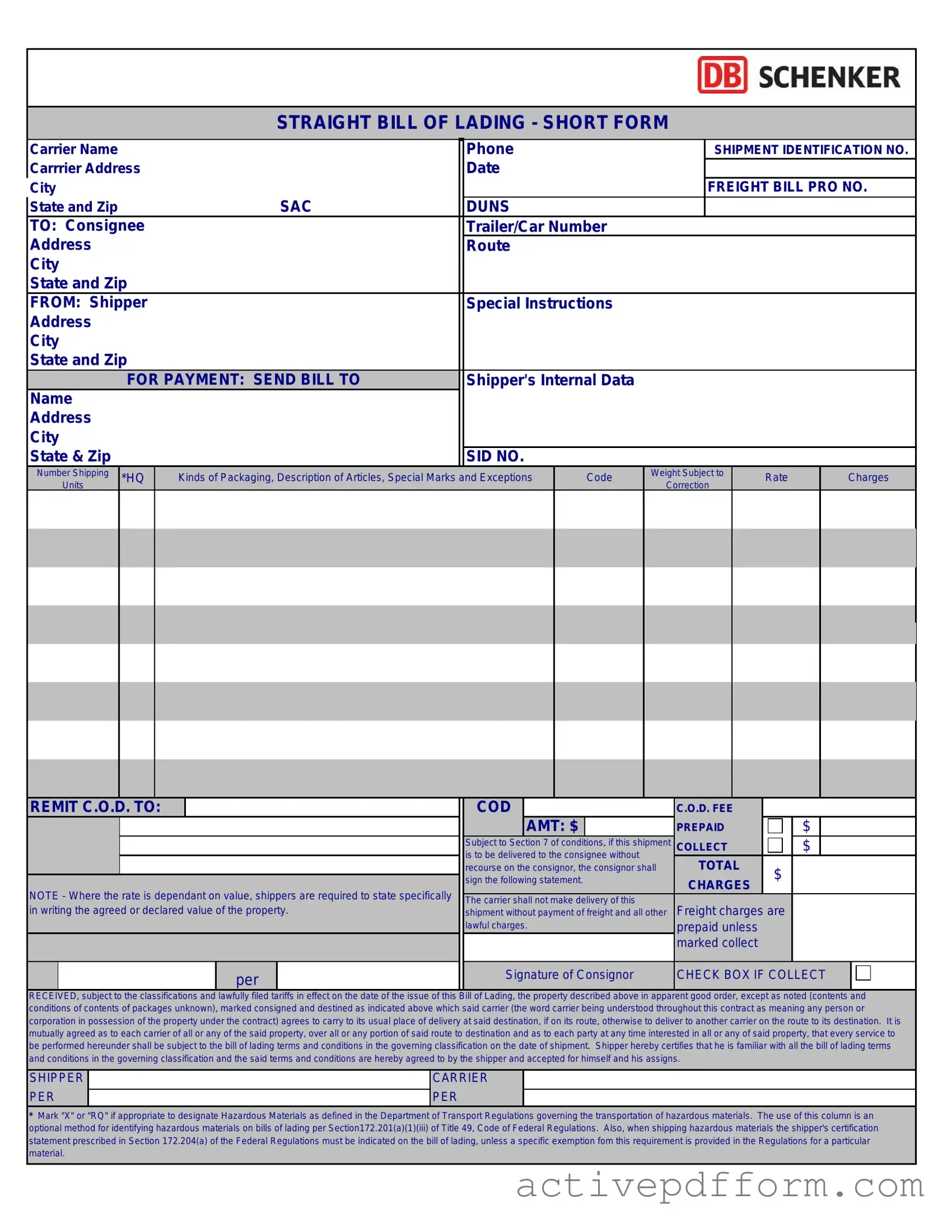What is a Straight Bill of Lading?
A Straight Bill of Lading is a document used in the shipping industry that serves as a receipt for goods and a contract for transportation. Unlike other types of bills of lading, a Straight Bill is non-negotiable. This means that it specifies a particular consignee who is the only party entitled to receive the goods. The carrier issues it to the shipper, confirming that the goods have been received and will be transported to the designated destination.
What are the key components of a Straight Bill of Lading?
Key components of a Straight Bill of Lading include the names and addresses of the shipper and consignee, a description of the goods being shipped, the shipping route, and any special instructions regarding the handling of the cargo. It also contains the carrier's details and may include terms and conditions that govern the transportation process. Each of these elements plays a critical role in ensuring that the shipment is properly managed and delivered.
How does a Straight Bill of Lading differ from a Negotiable Bill of Lading?
The primary difference lies in the transferability of the document. A Negotiable Bill of Lading can be endorsed and transferred to others, allowing for the sale or transfer of the goods while in transit. In contrast, a Straight Bill of Lading is tied directly to a specific consignee and cannot be transferred. This distinction impacts how ownership of the goods is handled during transit and who can claim them upon arrival.
What are the advantages of using a Straight Bill of Lading?
Using a Straight Bill of Lading offers several advantages. First, it simplifies the process of shipping, as there is no need for endorsements or transfers. This can reduce the risk of theft or loss associated with negotiable documents. Additionally, it provides clear documentation of the transaction between the shipper and the consignee, which can be useful for record-keeping and dispute resolution. For certain types of shipments, this clarity can enhance trust between parties.
When should a Straight Bill of Lading be used?
A Straight Bill of Lading is best used when the shipper and consignee have a pre-established relationship and when the goods do not need to be sold or transferred while in transit. It is commonly employed in situations where the consignee is known and there is no intention to transfer ownership during shipping. For example, it might be used in business-to-business transactions where the buyer is expecting the delivery directly.
What should I do if there is a discrepancy in the Straight Bill of Lading?
If you notice a discrepancy in the Straight Bill of Lading, it is essential to address it promptly. Contact the carrier immediately to report the issue. Discrepancies may include incorrect descriptions of the goods, wrong consignee information, or other errors. It is crucial to resolve these issues before the goods are delivered to avoid complications in receiving or claiming the shipment. Documentation of any discrepancies will also be helpful in case of further disputes.

